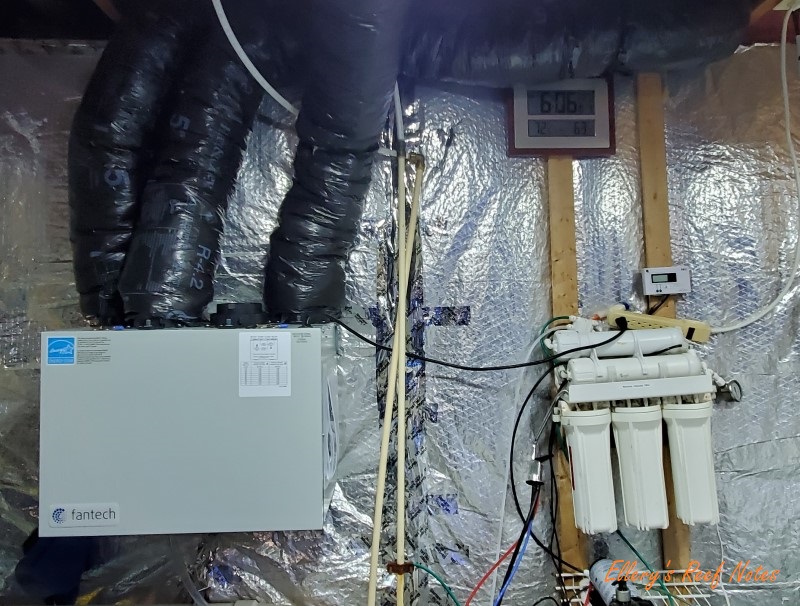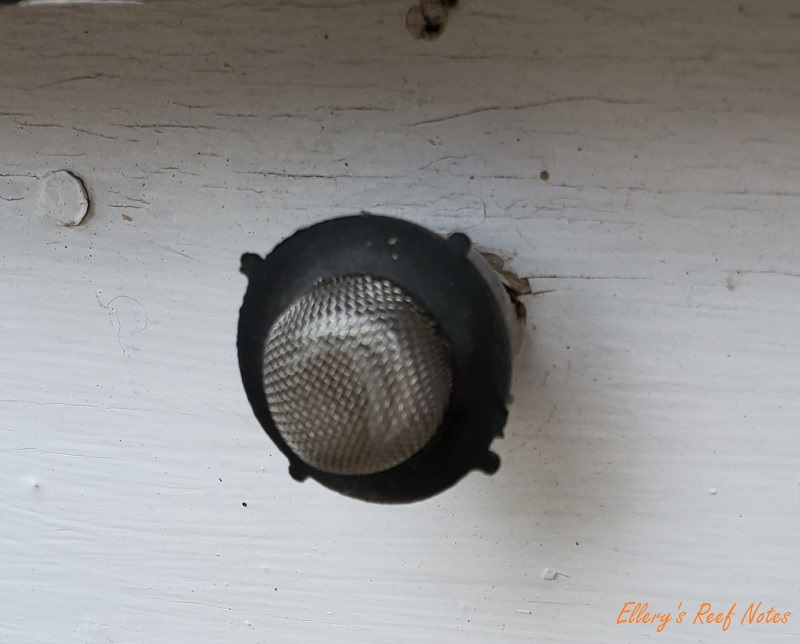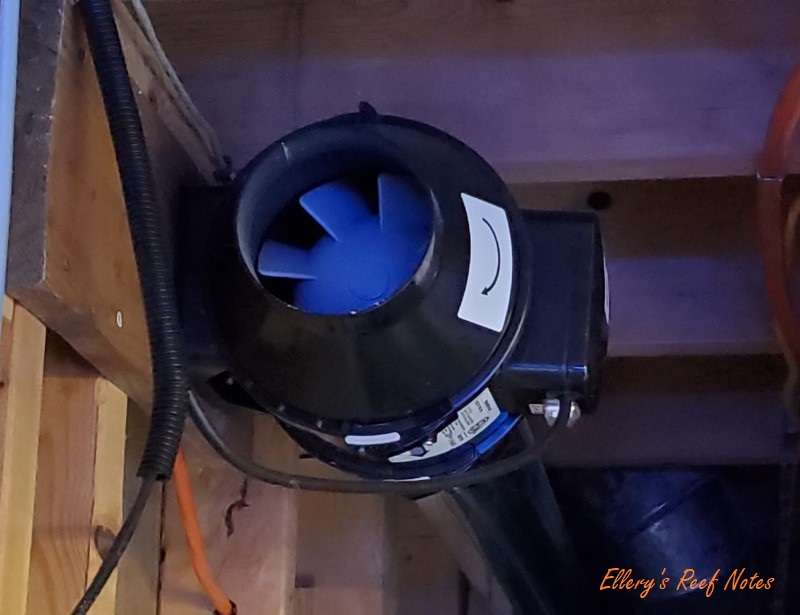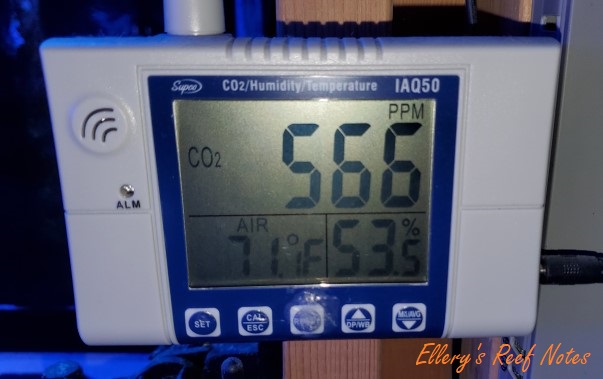PH is one of the most important parameters governing the growth and calcification of corals in the wild and in our reef tanks. However keeping aquarium pH water within a desirable range can be difficult with elevated indoor carbon dioxide levels, especially during the winter months when the doors and windows are kept shut.

Ever since I replaced all the windows on my house I have noticed the CO2 levels rise and maintaining desired pH levels in my tanks were difficult. I do use a single chamber calcium reactor so I expect a lower pH range but I don’t like it when I see the pH as low as 7.8 at night even with an algae turf scrubber and refugium running 24/7. I strive to maintain a pH between 8.2-8.4 for my corals for best calcification and growth. Sure there are naysayers about chasing numbers but from personal experience I want the coral under my care to thrive and not just survive. This was especially important with the rising cost and availability of corals these days.
The options I tried through the years to resolve this issue were the following:
- Opening windows, works but not the best choice during long heating and cooling seasons. (Annual effectiveness will obviously vary pending your climate.)
- Fresh air line to Skimmer, but just was not effective enough and it does have a slight impact the water temperature.

- Dosing Kalkwasser (calcium hydroxide), still use it but also has an impact to alkalinity and calcium which can cause swings.
- Adding a refugium, algae turf scrubber, and mangroves – the small biocapacity of plant life was not large enough to impact my 500g system with the existing CO2 levels in the house.

- CO2 absorption media, works but required alot of media and I didn’t want another expensive consumable to keep replacing constantly.
- Ducted blower controlled by a CO2 monitor, helped but impacts air flow balance in the house if I don’t crack open a window.

During this COVID-19 period I decided to add a dedicated heat recovery ventilator (for long heating season climates as compared to energy recovery ventilators in long cooling climates) to benefit my family as well as my reef system. Increasing fresh air into my home for the last 2 weeks made quite a difference now that I have to start keeping my windows closed since the temperatures start dropping. The levels on my CO2 monitor were historically hovering between 700-900 ppm in a 3 family household (much higher with guests or my daughter is running around). In a health and safety website they note the negative health impacts of CO2 levels in an enclosed environment above 1000 ppm.

The equivalent response from my 500g reef system is a pH range between 8.25 – 8.45 and a mean nominal of 8.3.

As with any solution time will tell about the long term effectiveness and if the costs are justified. Pending your home, your environment, the HRV/ERV system you chose and your reef system your mileage may vary. A combination of the above methods can be more effective. This was just another DIY project for me but even if the pH performance was slight the long term health benefits for my family during this pandemic period was justification enough.


